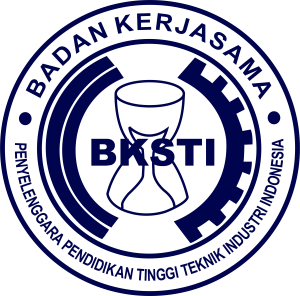Analisis Risiko Kesehatan dan Keselamatan Kerja Akibat Faktor Fisika Lingkungan Kerja pada Sektor Jasa Pengujian
DOI:
https://doi.org/10.37090/indstrk.v9i3.2375Abstract
High noise levels, as well as insufficient or excessive lighting and extreme room temperatures, can have an impact on employee Occupational Health and Safety (OHS). In testing service companies, employee complaints regarding physical work environment conditions—such as noise from laboratory equipment, overly bright lighting, and excessively cold room temperatures—indicate potential risks to occupational health and safety. This study aims to analyze the influence of physical environmental factors in the workplace. A descriptive analysis method was used to interpret primary and secondary data, which were then compared with Threshold Limit Values (TLVs), and followed by improvement recommendations using fishbone analysis. Measurement data showed the highest noise level in the analyst room at 83.1 dBA, close to the TLV of 85 dBA. The highest lighting levels were found in the BITU division head’s room and at Hilman’s desk, at 556 LUX and 576 LUX respectively. The lowest lighting level was recorded at Denrio’s desk with 301 LUX, compared to the lower TLVs of 150 LUX and 500 LUX. Room temperature measurements across all sampled locations showed a maximum of 27.3°C and a minimum of 21.2°C. Recommendations from this study include the development of Standard Operating Procedures (SOPs) for impact mitigation, employee training or education, and facility improvements to reduce the negative effects on occupational health and safety.
Keywords: Environment, K3 (Health and Safety), Testing services sector
Downloads
References
Afandi, P. (2018). Manajemen sumber day manusia teori, konsep dan indikator. Zanafa Publishing.
Andersson, I.-M., Gunnarsson, K., & Rosèn, G. (2015). Role of Headmasters, Teachers, and Supervisors in Knowledge Transfer about Occupational Health and Safety to Pupils in Vocational Education. Safety and Health at Work, 6(4), 317–323. https://doi.org/10.1016/j.shaw.2015.07.012
Angius, R., Giaccari, S., & Volpato, R. (2024). Topological defects in K3 sigma models. Journal of High Energy Physics, 2024(7), 111. https://doi.org/10.1007/JHEP07(2024)111
Ardhianti, U., & Irma Susanty, A. (2020). PENGARUH LINGKUNGAN KERJA TERHADAP KINERJA KARYAWAN PADA SUATU PERUSAHAAN DI JAKARTA.
Arifuddin, R., Rahim, I. R., Aprianti, E., & Radiatullah, A. (2020). Study and overview of the occupational health and safety management in the construction industry. IOP Conference Series: Earth and Environmental Science, 419(1), 012152. https://doi.org/10.1088/1755-1315/419/1/012152
CCOHS. (2022). Canadian Centre for Occupational Health and Safety.
Fitriani, D., & Wardhana, I. (2021). Pengaruh suhu lingkungan kerja terhadap kelelahan fisik pada pekerja industri ringan. Jurnal Kesehatan Lingkungan, 13 (2), 120-127.
Haryanto, T., Syafrudin, S., & Ramadhan, M. (2018). Dampak kebisingan terhadap kesehatan pekerja di lingkungan industri. Jurnal Ilmiah Kesehatan Kerja, 6 (1), 33-44
IRFC. (2021). Annual Report for the International Federation of Red Cross and Red Crescent Societies.
Kemnaker. (2018). MENTERI TENAGA KERJA DAN TRANSMIGRASI REPUBLIK INDONESIA.
Maddeppungeng, A., Asyiah, S., Intari, D. E., Putra, M. A., & Setiawati, D. N. (2023). Occupational Health And Safety (K3) Risk Management Analysis On Building Construction Projects In Indonesia: Literature Review Article Info ABSTRACT. Jurnal Teknik Sipil, 12, 2023. https://doi.org/10.36055/fondasi
Pati, U. D., Setiyadi, A., Mufarokhah Hanim, Imran, A. R., Kosasih, Sukardin, Suwigniyo, M. R., Tandilangi, I., Musdalifah, Adhianata, H., Sihombing, R., Plailingan, A., Sidabutar, S., & Ningtyas, R. (2023). KESEHATAN & KESELAMATAN KERJA. PT SADA KURNIA PUSTAKA.
Putra, A., & Handayani, L. (2019). Peran faktor ergonomi dan psikososial dalam peningkatan kesejahteraan kerja. Jurnal ergonomi dan kesehatan kerja, 7 (3), 75-82
Sutalaksana, I.Z., Tjakraatmadja, J.H., & Anggawisastra, R. (2016). Teknik perancangan sistem kerja. Bandung:Institut Teknologi Bandung.
Rati, Y., Keselamatan, W. , Kerja, K., Ilmu, J., & Masyarakat, K. (2017). 86 HIGEIA 1 (4) (2017) HIGEIA JOURNAL OF PUBLIC HEALTH RESEARCH AND DEVELOPMENT PENERAPAN HIRARC SEBAGAI UPAYA PENCEGAHAN KECELAKAAN KERJA PADA PROSES PRODUKSI GARMEN Info Artikel. http://journal.unnes.ac.id/sju/index.php/higeia
Sedarmiyanti. (2017). Manajemen Sumber Daya Manusia. (Sedarmiyanti, Ed.). Refka Aditama.
Sundari, L., Rambe, M. K., Pangeran, & Olivia, H. (2022). Analisis Kebijakan Keselamatan Dan Kesehatan Kerja (K3) Dan Perencanaan Terhadap Kejadian Kecelakaan Kerja. Jurnal Manajemen Bisnis Syariah, 2.
Synergi Solusi. (2023, June 1). Pengenalan tentang Sistem Manajemen K3: Membangun Lingkungan Kerja yang Aman dan Sehat. Synergi Solusi.
Tambunan, H. N., . N., & Sadalia, I. (2021). Analysis of Knowledge, Implementation and Monitoring of K3 on Occupational Health and Safety Management System (SMK3) at Pt. Mujur Lestari Labuhan Batu Selatan. International Journal of Research and Review, 8(12), 404–410. https://doi.org/10.52403/ijrr.20211249
Wahyuni, D., Prasetyo, E., & Lestari, S. (2020) Efek pencahayaan terhadap kelelahan mata dan konsentrasi kerja pada pekerja kantoran. Jurnal kesehatan dan keselamatan kerja, 10(2), 89-96
Downloads
Published
Issue
Section
License

This work is licensed under a Creative Commons Attribution-ShareAlike 4.0 International License.








